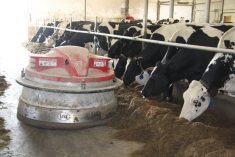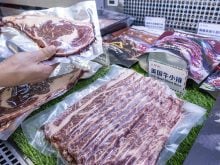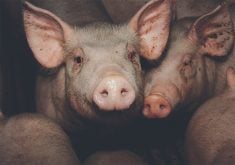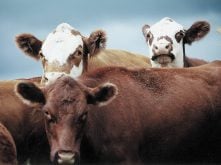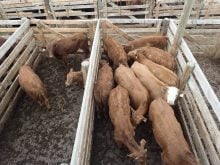LETHBRIDGE – For one of Canada’s major beef processing companies, the BSE crisis brought periods of dismay followed by periods of record profits.
“I won’t deny at all it was profitable for packers at that time here in Canada, but there were a lot of issues we had to go through that have changed the operations of our plants,” said Brent Altwasser, vice-president of Lakeside Packers in Brooks, Alta.
During a presentation delivered at the Tiffin Lecture in Lethbridge on Jan. 19, Altwasser described the lessons learned from BSE and the changes wrought since it was found in Canada in May 2003.
Read Also
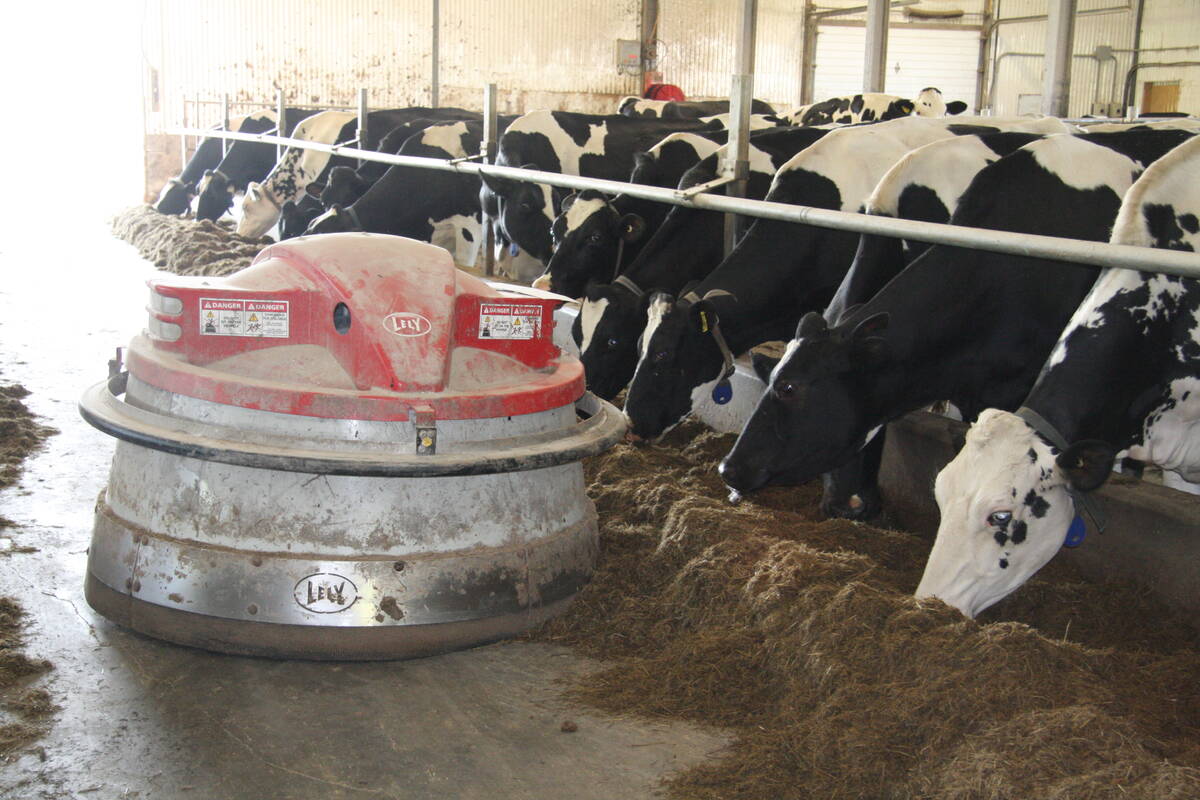
Partnerships, communication key to disease management
Communication and strong, trusted partnerships are key to managing infectious diseases like Foot and Mouth Disease and HPAI.
Lakeside, owned by Tyson Foods of the United States, slaughters cows and fed cattle. Handling cows was a profitable side of the business but for a time companies exporting beef to the U.S. could not handle both in the same plant for fear of cross contamination of specified risk materials believed to harbour BSE infection. Lakeside was forced to abandon the cow side of the business for a time, but now regularly kills cows.
Like many producers and processors, the biggest surprise for Lakeside was how long it took to normalize trade and business, with markets remaining only partially open. Although adjustments for food safety purposes have been made quickly, Altwasser said some changes did not come quick enough.
When the trade embargoes were announced within hours of Canada announcing the discovery of BSE, Lakeside had 100 containers full of beef crossing the ocean to the Pacific Rim. The beef suddenly lost its value and the company had to either pay to bring it back to Canada or dispose of it.
“The week prior to BSE we slaughtered 26,000 cattle. The week after BSE we did 7,300.”
As the first weeks of the crisis lurched forward, the most pessimistic among his colleagues predicted the border would open within three months. They were wrong.
Trade in beef from cattle younger than 30 months started in September 2003 but new processing rules were implemented with dire consequences for those who failed to meet the grade.
Under new federal government rules, plants remove the distal ileum, also known as the small intestine, from all cattle and separate a longer list of materials from cattle older than 30 months.
“If we don’t follow these policies correctly we’ll lose our export privileges and CFIA will shut the plant down,” Altwasser said.
Lakeside hired 25 additional employees at a cost of $40,000 per person to control specified risk materials. While governments have a list of prohibited materials, private enterprise has expanded the requirements.
For example, McDonald’s has imposed a larger SRM list and specifications on how it wants risk materials removed.
Other aspects of the business have been lost.
The plant’s rendering facility once added value to otherwise unwanted products. The company extracted gelatin for the Japanese market where it was used to make candy. This $5 million operation was shut down.
Once beef could leave the country again, it was soon realized Canada did not have the killing capacity to match its cattle production.
Packer expansions are under way but feeder cattle are leaving the country at two and half times the normal rate because the Americans are in expansion mode and they do not have enough to meet their needs. It is more expensive for them to buy Canadian cattle because of the higher dollar and new regulations but the movement continues at a brisk pace to fill the shortage of cattle.
Many slaughter-ready cattle are destined for Pacific Northwestern packers that bid hard to keep their plants full and running.
Packers look for young animals for export, but the national cow kill also began to boom in November as more producers kept their heifers for rebreeding to increase the feeder calf supply.
A larger cow kill has reduced the size of the national herd.
In hindsight, Altwasser said it was a good idea to avoid the massive cow kill that had been proposed early in the crisis to reduce the herd to only domestic needs.
There is now demand for Canadian cattle and allowing the herd numbers to remain as they were will help meet future needs, he said.
Still, competition for calves is strong and one of the new realities is the cost of production.
At one time Alberta and Saskatchewan had the lowest costs of production but that is no longer the case. Feeding costs are higher in Canada than they are in the United States.
“It costs us more in our feedlot to finish cattle than if we fed those cattle in southern feedlots.”
Altwasser said the recently imposed corn countervail against U.S. imports is moot because there is plenty of cheap grain available this year.
“The Americans have adopted a strategy saying, ‘we are going to do subsidized grain production in the U.S. so we can have a competitive livestock industry,’ ” he said.
The higher Canadian dollar and the price of labour further reduces productivity.
“In the mid-1990s we had the lowest labour costs in the company. Today we have one of the highest and that is without the dollar. The dollar continues to go up. It will be challenging to get cattle that might go south otherwise.”
The company has vowed to be more efficient to offset rising costs of labour and cattle.
Brooks is in the middle of a thriving oil patch and there is intense competition for good workers. The company employs 2,400 people at Lakeside and 60 percent come from North African nations. There are more than 2,000 Sudanese living in Brooks.
“We would be processing more cattle if we could hire more people,” Altwasser said.
The Lakeside feedlot is half full because the company cannot find enough pen riders and other staff.
Another frustration is the Canadian identification system and age verification campaign.
“This one frustrates me because we basically piddled away a year advantage from the Americans,” he said.
“It should have been made mandatory 18 months ago so all producers would have to put in birth dates with their bar codes.”
If that had happened, he said, there would now be substantial numbers of cattle with verified birth dates.
“For big plants like ours, to have a pen of cattle here and a pen of cattle there offered to us with birth dates does not help us.”
A large packer killing more than 4,000 head per day does not have time to sort small batches of cattle, which costs time and money.
“If there is not a birth date there will be a discount but we are probably two years away from it,” he said.



